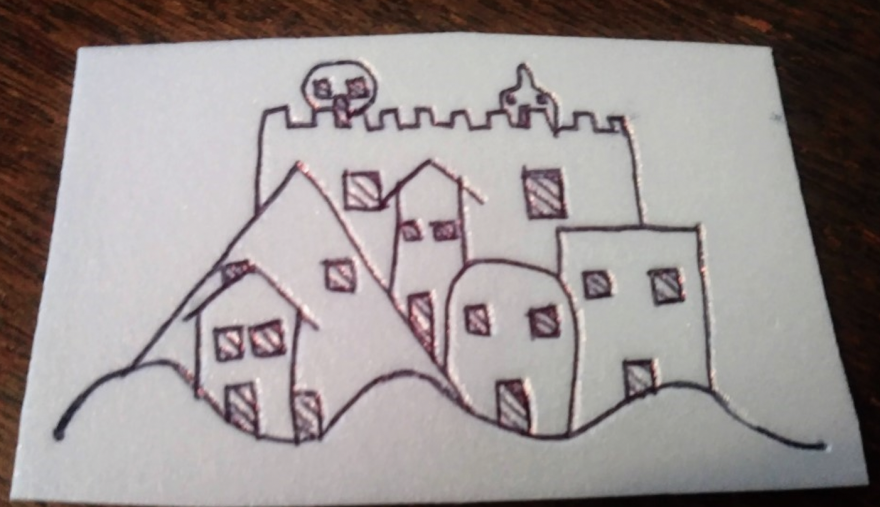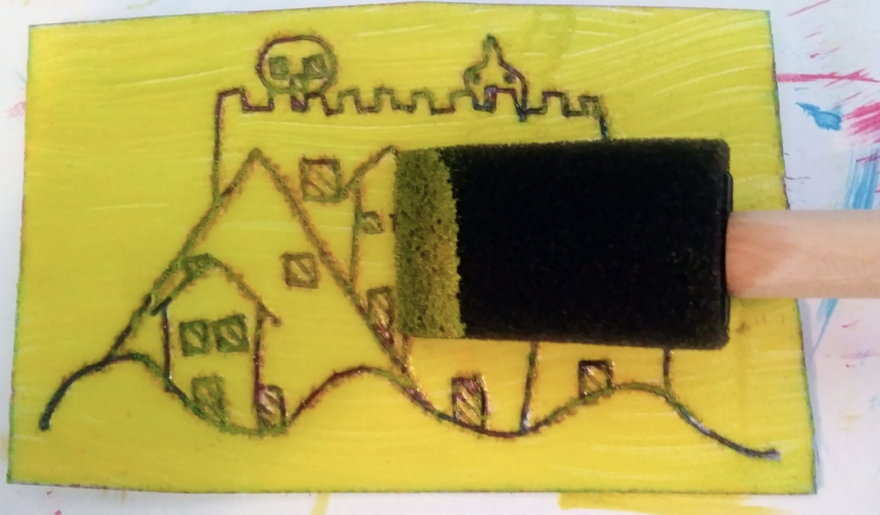Molly Skouson, Intern
Grinnell College Museum of Art
Learn
In most 2D art, you draw, paint, etc. directly onto a piece of paper or cloth. But printmaking is different. Instead of drawing directly on the paper, you draw on something else first and then transfer the drawing to a piece of paper. Let's learn how!
First, printmakers create an image on a surface called a matrix. A matrix could be a sheet of metal, a block of wood, a flat stone, or a piece of styrofoam:
Then, they put ink or paint on the matrix:
Finally, they press a piece of paper onto the matrix to transfer the ink or paint onto the paper:
Printmaking allows artists to make multiple impressions (copies) of the same print just by putting more ink or paint on the matrix and pressing another piece of paper onto it. This activity guide gives instructions for making prints similar to woodcuts you can find in our collection.
These woodcuts are cityscapes, or artwork depicting cities or towns. What shapes are the buildings? What does the land and sky around the city look like? Are there people in the pictures? Who might live in these cities? How do the artists create different patterns and shades of gray using straight and curved lines?
Create
Gather Your Supplies
- Flat pieces of styrofoam, like a well washed meat tray, a take-out container or an egg carton. This will be your matrix.
- A sharp object to draw with, like a pen, pencil, or golf tee.
- Water-based printing ink or a thick paint like tempera.
- Something to spread the ink/paint with, like a mini paint roller, a foam paint brush, or a normal paint brush.
- Sheets of paper that are at least as big as your matrix.
Make Your Prints
- Draw your picture (you could try drawing a cityscape!) on a piece of Styrofoam, going over the lines several times so they’re pretty deep. If it’s easier, you can draw it on a piece of paper first and then trace the lines into the styrofoam.
- Cover your picture with ink or paint using your brayer or paint brush.
- Lay a piece of paper on top of the styrofoam and press the paper down with a spoon or your fingers. Rub across the entire surface.
- Lift the paper to reveal your print!
- Now you can clean and repaint your Styrofoam matrix with different colors. You can make a whole series of prints! How do the different colors affect the way the picture looks? For instance, is a red picture happier than a blue picture, or the other way around?
More Ideas
- Create a color gradient by painting with two colors of ink or paint.
- Draw on your prints after making them to highlight details or add patterns.
Write
Write a story about your print! If you created a cityscape, you could write a history of the city. Who founded the city? What special festivals does the city celebrate? What products are produced in your city? Or create a list of laws for the residents of your city.










